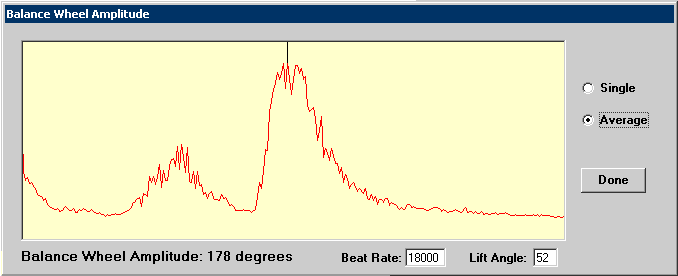|
Measuring Clocks and Watches
Measuring watches with an acoustic sensor An acoustic pickup is always used when measuring watches. This is because the mechanism is so small it’s hard to get anything else in there. Just as the acoustic sensor lets you see details of a clock escapement, so does it reveal critical information about the watch escapement. A single tick in a watch is made up of several component sounds generated by different parts of the escapement. The major sounds in a lever escapement are the unlocking, the impulse, and the drop. In this oscilloscope display you can see the three component sounds. If you have a watch timer that’s able to measure the relative level of sound from the tick instead of just triggering on a threshold, it can be made to display this information without an oscilloscope.
This picture shows the watch tick as displayed on the computer screen. You can easily see the three primary sounds. Such a display can help the skilled watchmaker analyze the general character of the tick, but it has another specific use, which is to measure the amplitude of oscillation of the balance wheel.
The structure of the escapement allows a mathematical computation to estimate the amplitude of oscillation from the location of the component sounds within the tick. Once an electronic timer has gathered this information and transmitted it to a computer, the computer can analyze the signal and calculate the amplitude. In this example, the software has calculated that the amplitude of oscillation is 178 degrees, as is indicated at the lower left corner of the window. |

